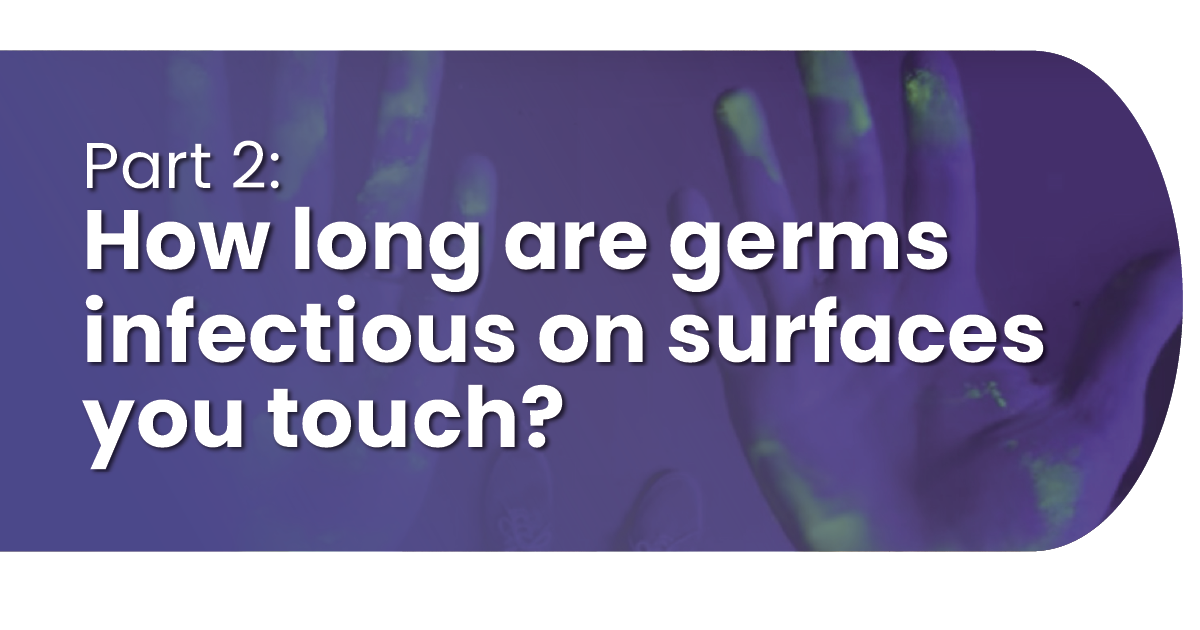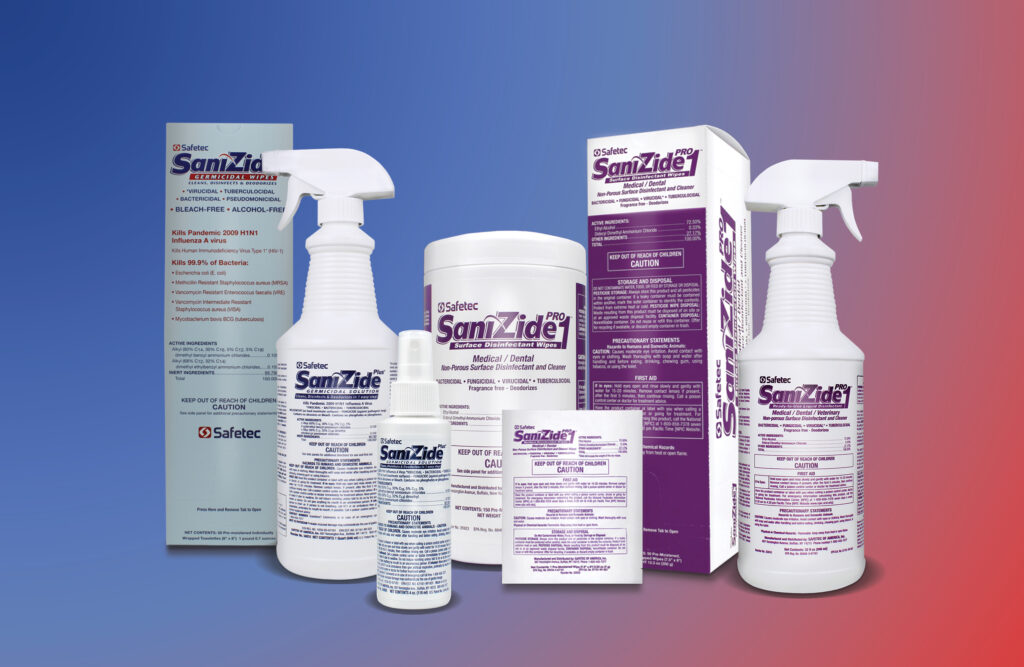
How Long Are Germs Infectious on Surfaces You Touch? Part 2
As we covered in part 1, germs are everywhere. Germs range from harmless to (in some cases) deadly. While harmful germs, or pathogens, can survive and remain infectious on surfaces, the amount of time varies depending on many conditions. They can live a shockingly long time almost everywhere you touch: countertops, door handles, light switches, computers, even inside refrigerators and freezers. However, there is a difference between hard and soft surfaces.
Soft, Porous Surfaces Vs. Hard, Non-Porous Surfaces
There are distinct differences in the effectiveness of transmission between hard, non-porous surfaces such as glass, laminates, or smooth plastics and porous, soft surfaces such as privacy curtains, lab coats, and bed linens. Because germs need a moist environment to thrive, such as inside a human body, they tend to deteriorate faster on soft surfaces that pull moisture away from them.
Longer Viability Surfaces
Surfaces that are likely to have longer germ viability include:
- Countertops
- Stainless steel
- Bedrails
- Doorknobs
- Equipment made from hard plastic and metal
- Faucets
- Light switches
- Paper that is less porous such as money and printing paper
- Tables
- Utensils
Surfaces Where Germs Lose Viability Faster
On the other hand, you can expect germs to lose viability faster on softer surfaces such as:
- Bedding
- Clothing
- Blankets
- “Hard” Surfaces that are porous such as unfinished wood
- Paper Products designed for absorbing moisture such as tissues, toilet paper, and paper towels
- Towels
Enveloped Versus Non-Enveloped Viruses
An enveloped virus is a virus that has an outer wrapping or envelope. Newly formed virus particles become “enveloped” or wrapped in an outer coat made of a plasma membrane. Enveloped viruses can cause persistent infections and must transfer from host to host. Examples of enveloped viruses include ones that cause notorious diseases in humans, such as SARS-CoV-2 (the virus that causes COVID-19), Influenza, Hepatitis B, and C. Enveloped viruses are easier to kill with disinfectants and have a shorter lifespan on most surfaces than non-enveloped viruses. It’s commonly thought that these viruses will not be viable after a maximum of 48 hours. However, “non-enveloped” viruses can remain viable on surfaces for much longer.
Non-enveloped viruses do not have a lipid covering or plasma membrane. Because they lack a lipid envelope, they are more resistant to many disinfectants and other stresses like drying out or heat. Examples of non-enveloped viruses include types that can cause dysentery (Norovirus), common colds (Rhinovirus), and Polio (Poliovirus).
How Long Can Germs on Surfaces Cause Infections?
While cold and flu germs can be viable for an extended amount of time on a surface, that doesn’t mean they can infect you within that duration. Germs on a surface begin to degrade almost immediately. Knowing how long germs are infectious outside the body can help you realize when you should clean and disinfect.
Minimizing risk
Germs can flourish anywhere in a facility. The CDC recommends routine cleaning of commonly touched surfaces. Disinfecting should be part of your usual cleaning routine, whether or not anyone is knowingly sick.
Use a disinfectant. Disinfectants distinguish themselves from other cleaning products by killing certain germs rather than removing them.
However, not every disinfectant is equal. The Environmental Protection Agency (EPA) issues registered lists of antimicrobial products effective against common pathogens, including one released in 2020 with a list of disinfectants effective against SARS-CoV-2. To be on this list, these products were proven effective against SARS-CoV-2 or met the EPA’s Emerging Viral Pathogen Claim. This claim requires companies to prove their products are effective against viruses that are even harder to kill than SARS-CoV-2.
The Takeaway
Knowing how long germs are infectious on different surfaces can help you determine how often to clean and with what product. Our team at Safetec recommends an EPA registered, ready-to-use formula with a wide range of kill claims and a shorter contact time.
Made in America, for America
Founded in 1992, Safetec of America products are USA made and manufactured in Buffalo, New York. Safetec continues to make significant investments in our FDA Regulated manufacturing facility, the machines we use to manufacture, and the people of Safetec to ensure the quality and strength of our products.
Safetec’s SaniZide Pro 1® Surface Disinfectant Spray & Wipes is a broad spectrum, EPA Registered surface disinfectant that combines cleaning and disinfecting in one simple step with its ready-to-use, alcohol-based hospital-grade formula. With true one minute kill claims for 48 microorganisms, as well as SARS-CoV-2, the virus that causes COVID-19*, SaniZide Pro 1 is safe and effective for any facility.
Safetec also offers an alcohol-free option, SaniZide Plus® Surface Disinfectant Spray is a non-corrosive, EPA registered, quaternary ammonium compound effective against MRSA, VRE, Tuberculosis, Influenza, Poliovirus, Norovirus and SARS-CoV-2, the virus that causes COVID-19. SaniZide Plus® Germicidal Wipes are pre-saturated hard surface wipes that kill viruses such as MRSA, TB, VRE, and E. Coli in 10 minutes and HIV-1 in 2 minutes. They are also effective against SARS-CoV-2, the virus that causes COVID-19, according to the emerging viral pathogen claim. Our dual quat, alcohol-free formula is non-flammable and non-corrosive on surfaces.
*According to the emerging viral pathogen claim.

Sources:
https://www.contecinc.com/articles/viruses-are-not-the-same/
https://www.viroxanimalhealth.com/resources/talkcleantome/2013/09/porous-versus-non-porous-who-wins.html
https://www.cancer.gov/publications/dictionaries/cancer-terms/def/enveloped-virus
https://www.health.com/condition/cold-flu-sinus/best-disinfectants
